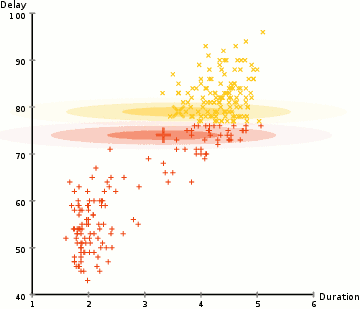7 Benefits of Smart Grid Explained
Benefits of smart grid are; improved reliability, seamless integration, smart home usage, reduction of carbon footprint, optimization of renewable technology, cost reduction, and job creation.
These may also be described as the benefits of smart grid systems.
The main purpose of the smart grid is to establish efficient integration, sustainability, and collaboration between consumers, operators, and components of the electricity distribution network.
This article discusses the benefits of smart grid systems, as follows;
1). Improved Reliability (as one of the Benefits of Smart Grid)
Smart grid systems are more reliable than traditional grids.
There are multiple reasons for this. One of them is the automated mode of operation of smart grid networks.
Automation is in fact one of the main features of smart grid. Using artificial intelligence and software algorithms, smart grids are equipped to collect and analyze energy data in real time [4].
Such data usually indicates factors like the amount of energy that is being consumed, the presence of faults and outages, patterns of energy supply and demand, among others.
Based on the data available, smart grid systems can act autonomously and resolve several problems on their own, without need for human interference.
For example, a smart grid system is capable of detecting outages and faults, identifying their root causes, and mitigating these problems [2].
Rapid response implies that the smart grid can meet the needs of the user and reduce inconsistency or power supply. It is therefore a source of reliability.
Smart grid systems are easy to manage and maintain, and the real-time information which they provide can help operators and users to cooperate effectively so as to achieve both energy efficiency and energy conservation in the supply and consumption of electricity.
2). Seamless Integration
Integration is one of the benefits of smart grid networks, and enables them to be developed into an elaborate system [1].
As a result of seamless integration capability, various important elements can be added to a smart grid network, to enhance its capacity and efficiency. This includes multiple energy sources.
With smart grids, data can be collected simultaneously from multiple power plants, stations and sub-stations; including the more uncommon types like biofuel-fired plants that derive their fuel from organic matter (biomass) that is refined in a biorefinery.
Integration helps smart grid networks become ‘smart’ by allowing them to incorporate software algorithms into their architecture.
Efficiency and reliability may both be attributed to integration. This is because integration links multiple components seamlessly within the smart grid network so that the risk of total system failure is reduced.
Lastly, integration enables operators to easily upscale, modify and upgrade a smart grid network, as it allows for the replacement or addition and removal of components.
3). Smart Home Usage (as one of the Benefits of Smart Grid)
Smart grid connectivity is an essential component of residential energy management systems [7]. It is also useful for optimizing power usage in a smart house.
In order to simplify smart grid integration in residential buildings, a control box is often used to regulate the supply of power to various electric devices in a house. The mode of regulation is itself usually controlled by algorithms, based on power usage data collected from the house by the smart grid system.
The use of smart grid systems in homes is an effective means of conserving energy and increasing energy efficiency on a large scale, since residential buildings account for a large portion of energy consumption.
4). Reduction of Carbon Footprint
Electricity generation is a known cause of atmospheric emission of carbon dioxide among other greenhouse gases, and can be linked to environmental degradation in the form of global warming and climate change [5]
Smart grid systems reduce carbon emissions mainly by reducing the demand for electricity, and the rate at which it is both generated and consumed.
Through demand response (allocation of power based on precise demand) mode of operation, smart grids conserve energy [9], and reduce peak load or maximum consumption rates.
This in turn reduces energy wastage and enables power plants to work at an optimized pace that does not place a strain on the environment.
5). Optimization of Renewable Technology (as one of the Benefits of Smart Grid)
Smart grid systems can mitigate the economic vulnerability that is created by excessive reliance on fossil fuels [6].
This is achieved by the seamless integration of renewable energy into the grid network.
Unlike traditional grid systems, the smart grid can collect data on the operations of hydroelectric, solar, bioenergy, wind, wave power and geothermal facilities in real-time, thereby optimizing the operations of these facilities.
Smart grid systems also optimize the operations of sustainable technologies like electric cars and hybrid cars, by utilizing the demand response functionality to allocate power to charging stations according to demand.

6). Cost Reduction
Cost reduction is one of the social benefits of smart grid systems.
The smart grid reduces energy cost through conservation and efficiency optimization.
By using demand response functionality, smart grid systems ensure that the consumer does not pay for more than the amount of energy consumed within a given period of time, and eliminates cost which could arise from energy wastage.
Smart grid systems also reduce cost by making it easy to integrate cheaper energy alternatives into the power supply chain. These alternatives are further optimized using predictive algorithms and demand response models.
Lastly, smart grids integrate and work in collaboration with storage systems including deep cycle batteries and other power storage technologies, to conserve energy and reduce wastage as well as cost [8].
7). Job Creation (as one of the Benefits of Smart Grid)
The advancement and adoption of smart grid technology are important to help achieve the economic requirements of sustainable development.
Thousands of jobs have been created in the smart grid sector, to fill gaps in maintenance, manufacture and installation, and upgrade.
Specific roles in this area include communications, project management, electrical engineering, mechanical engineering and software engineering.

Conclusion
Benefits of smart grid are;
1. Improved Reliability
2. Seamless Integration
3. Smart Home Usage
4. Reduction of Carbon Footprint
5. Optimization of Renewable Technology
6. Cost Reduction
7. Job Creation
References
1). Bansal, H.; Mathur, H. D. (2012). “Distributed Generation Integration in Smart Grid Technologies.” EESDM. Available at: https://www.researchgate.net/publication/316989999_Distributed_Generation_Integration_in_Smart_Grid_Technologies. (Accessed 8 September 2022).
2). Dhend, M.; Chile, R. H. (2017). “Fault Diagnosis of Smart Grid Distribution System by Using Smart Sensors and Symlet Wavelet Function.” Journal of Electronic Testing 33(2). Available at: https://doi.org/10.1007/s10836-017-5658-9. (Accessed 8 September 2022).
3). Karnouskos, S. (2013). “Smart houses in the smart grid and the search for value-added services in the cloud of things era.” Industrial Technology (ICIT), 2013 IEEE International. Available at: https://doi.org/10.1109/ICIT.2013.6505988. (Accessed 8 September 2022).
4). Klaimi, J.; Rahim-Amoud, R.; Merghem-Boulahia, L.; Jrad, A. (2016). “Energy Management Algorithms in Smart Grids : State of the Art and Emerging Trends.” International Journal of Artificial Intelligence & Applications 7(4):25-45. Available at: https://doi.org/10.5121/ijaia.2016.7403. (Accessed 8 September 2022).
5). Myrhvold, N.; Caldeira, K. (2012). “Greenhouse gases, climate change and the transition from coal to low-carbon electricity.” Environmental Research Letters 7(1). Available at: https://doi.org/10.1088/1748-9326/7/1/014019. (Accessed 8 September 2022).
6). Rahman, G.; Bin, F.; Chowdhury, R.; Abdulla, M.; Mamun, A.; Hasan, R.; Mahfuz, S. (2013). “Summary of Smart Grid: Benefits and Issues.” International Journal of Scientific and Engineering Research 4(3):7. Available at: https://www.researchgate.net/publication/273758536_Summary_of_Smart_Grid_Benefits_and_Issues. (Accessed 8 September 2022).
7). Rathor, S.; Saxena, D. (2020). “Energy management system for smart grid: An overview and key issues.” International Journal of Energy Research 44(3). Available at: https://doi.org/10.1002/er.4883. (Accessed 8 September 2022).
8). Srivastava, A.; Kuppannagari, S. R.; Kannan, R.; Prasanna, V. (2019). “Minimizing Cost of Smart Grid Operations by Scheduling Mobile Energy Storage Systems.” Letters of the IEEE Computer Society PP(99):1-1. Available at: https://doi.org/10.1109/LOCS.2019.2931967. (Accessed 8 September 2022).
9). Strüker, J.; Dinther, C. (2012). “Demand Response in Smart Grids: Research Opportunities for the IS Discipline.” 18th Americas Conference on Information Systems (AMCIS), Seattle, Washington. Available at: https://www.researchgate.net/publication/297453314_Demand_Response_in_Smart_Grids_Research_Opportunities_for_the_IS_Discipline. (Accessed 8 September 2022).
